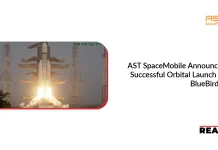Lam Research announced that SK hynix Inc. has selected Lam’s innovative dry resist fabrication technology as a development tool of record for two key process steps in the production of advanced DRAM chips. A breakthrough technology introduced by Lam in 2020, dry resist extends the resolution, productivity, and yield of Extreme Ultraviolet (EUV) lithography, a pivotal technology used in the production of next-generation semiconductors.
Also Read: Valens Semiconductor’s Stello Chipsets to Power Crestron’s Next-Generation Product Lines
Through Lam’s work with SK hynix and ongoing collaboration with ecosystem partners on dry resist technology, the company continues to take a leadership role in driving patterning innovations to remove the roadblocks associated with scaling to future memory nodes with EUV lithography.
Lam Research announces that SK hynix has chosen innovative dry resist technology for production of advanced DRAM chips.
“Lam’s dry resist technology is a game-changer. By innovating at the material level, it addresses EUV lithography’s biggest challenges, enabling cost-effective scaling for advanced memory and logic,” said Richard Wise, vice president and general manager of the dry resist product group at Lam. “We are proud to continue our long-standing collaboration with SK hynix to accelerate DRAM technology innovations.”
SK hynix intends to use Lam’s dry resist underlayer and dry development processes for advanced DRAM patterning. “As DRAM continues to scale, innovations in EUV patterning are critical for delivering the performance needed for today’s increasingly connected devices at a cost that is right for our customers,” said BK Lee, head of R&D process at SK hynix. “The dry resist technology that we are working on with Lam enables exceptionally precise, low defect, and lower cost patterning.”
As chipmakers move to advanced technology nodes, they must resolve ever smaller and finer chip designs on the wafer. First developed by Lam in collaboration with ASML and IMEC, dry resist technology offers several advantages over conventional chemically amplified resist patterning for EUV lithography. Dry resist technology solutions significantly enhance EUV sensitivity and the resolution of each wafer pass, enabling patterns to better adhere to the wafer and improving performance and yield. In addition, Lam’s dry resist development approach offers key sustainability benefits by consuming less energy and five to ten times less raw materials than traditional chemical wet resist processes.




